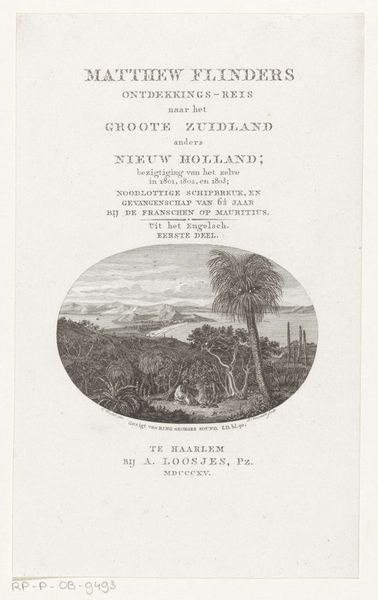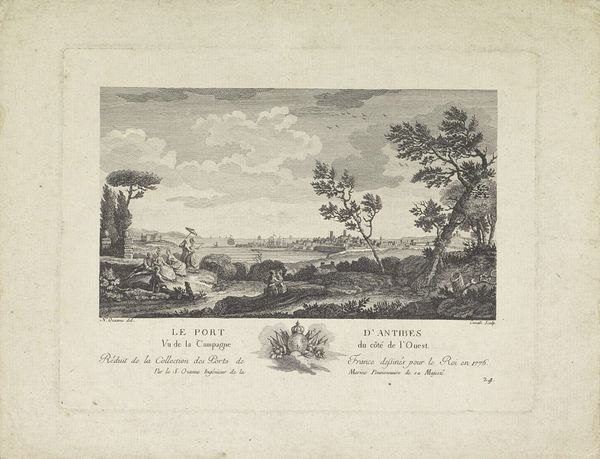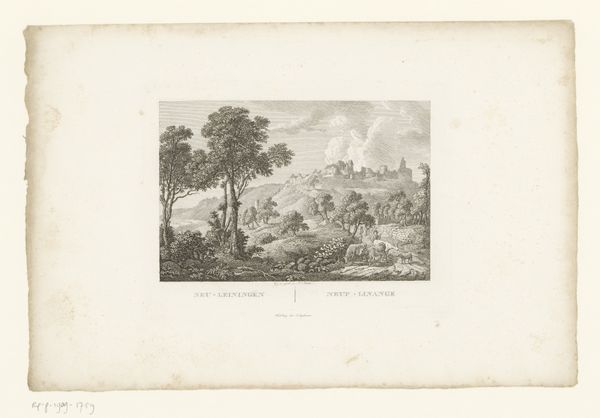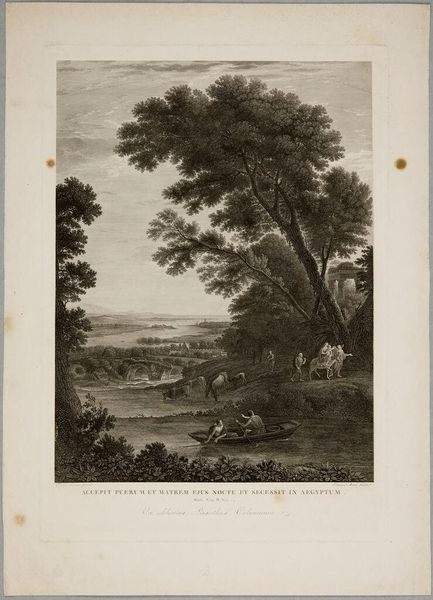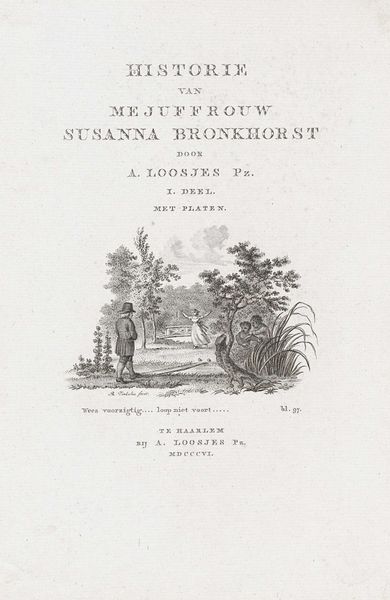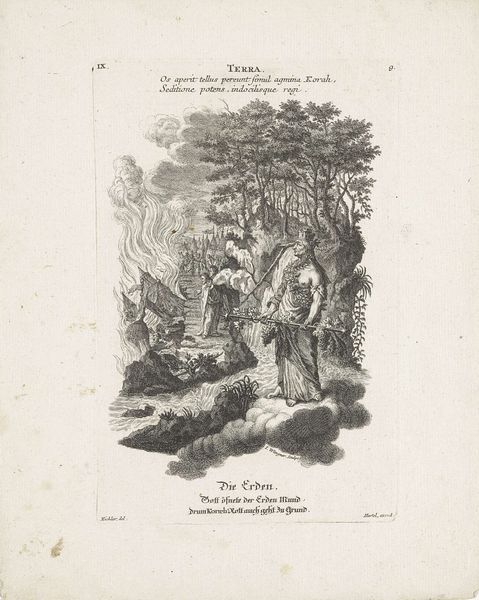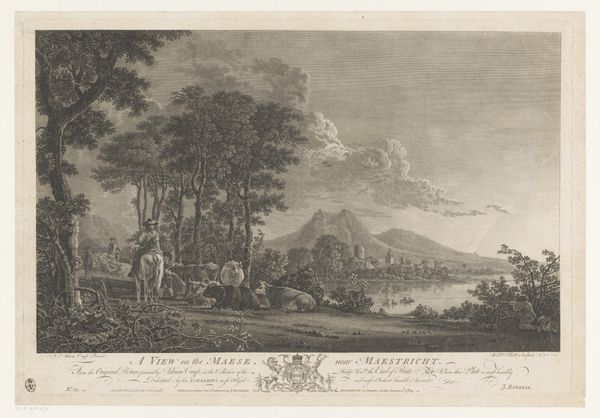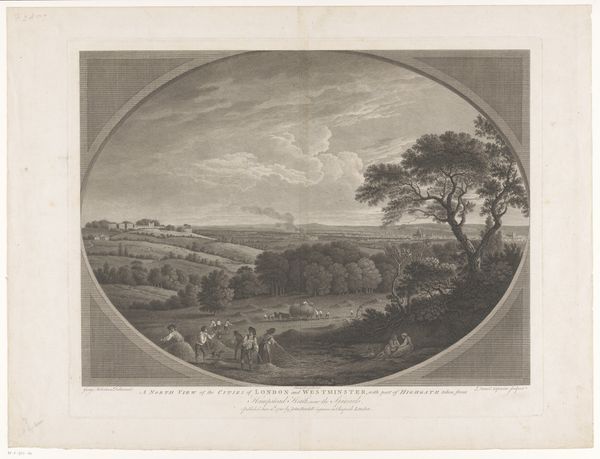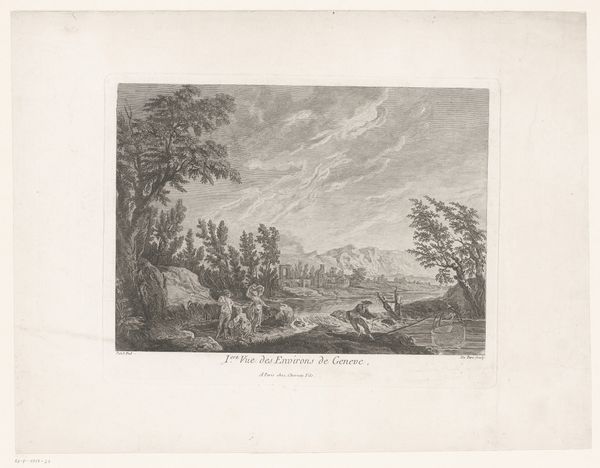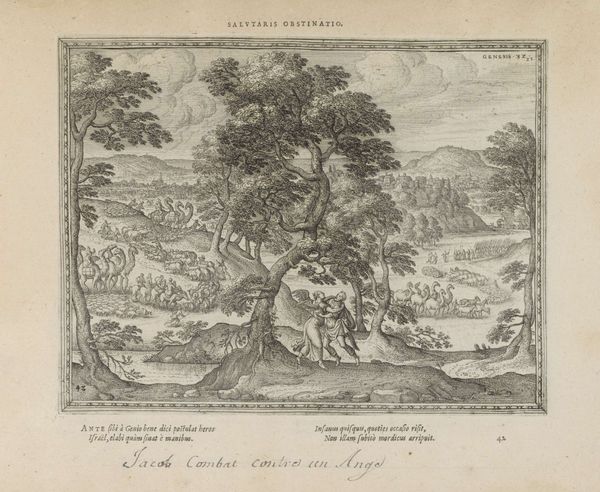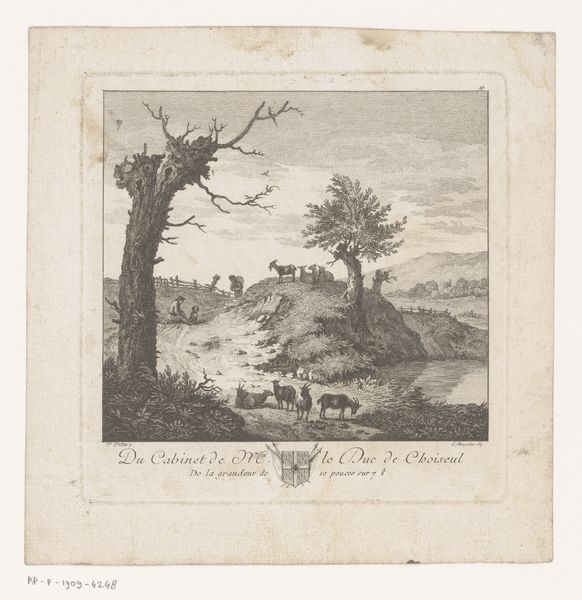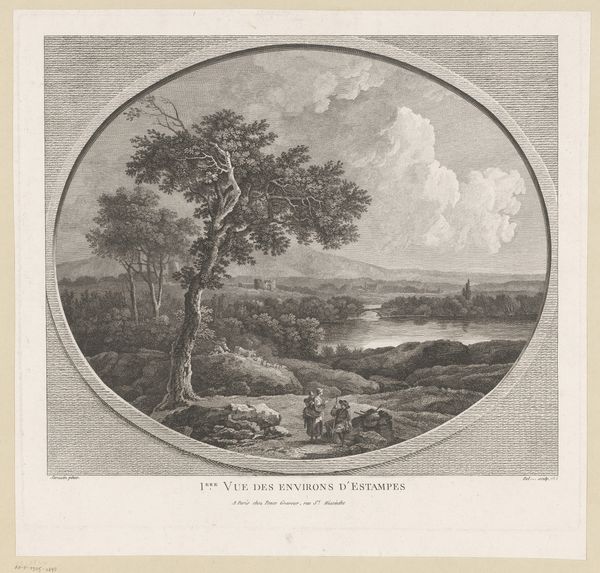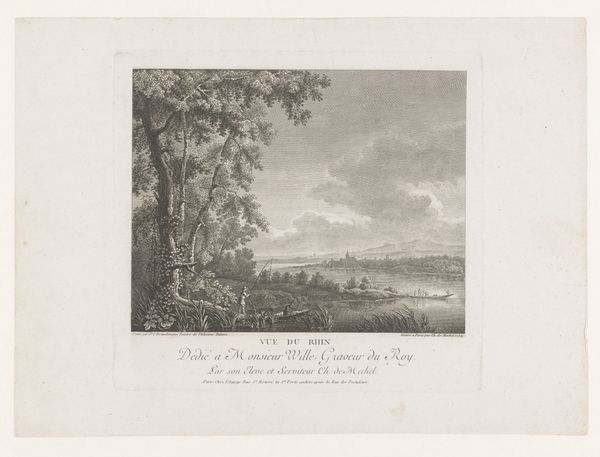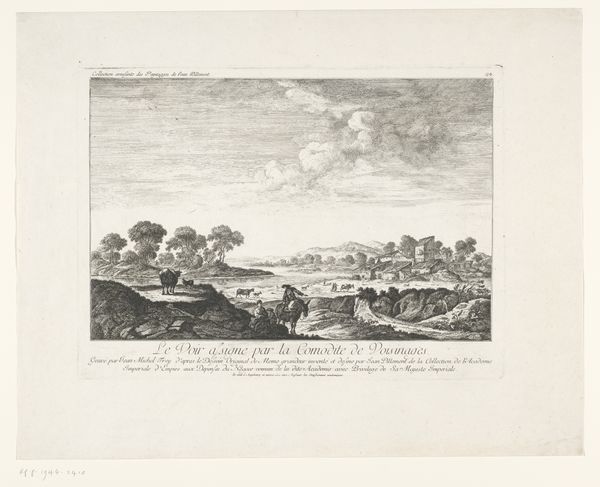
print, engraving
# print
#
old engraving style
#
hand drawn type
#
landscape
#
romanticism
#
engraving
#
realism
Dimensions: height 227 mm, width 141 mm
Copyright: Rijks Museum: Open Domain
Editor: What strikes me first is the sheer contrast, that delicate network of etched lines bringing forth the image of Port Jackson. The material labor, the painstaking act of cutting into the plate, is almost palpable. Curator: Indeed. This is “Gezicht op Port Jackson,” an engraving by Daniël (I) Veelwaard, dating back to 1815. Observe how Veelwaard uses line and texture to delineate form, carefully orchestrating shadow and light to give depth to the composition. Editor: And those figures in the foreground huddle around a fire...it speaks of community, of shared resources carved from the landscape. There's an immediate relationship conveyed, not just between people, but people *and* place. What’s the context of this particular view? Curator: This print served as an illustration in Matthew Flinders' book, documenting his exploration of the Australian coast. See how the vantage point emphasizes the landscape as the primary subject, framed as something to be discovered, claimed, charted... Editor: And commodified, certainly. This wasn't just an act of scientific discovery, but a mapping out of resources, a visual assertion of ownership made manifest by tools like engraving. This book would have served a distinct purpose in distributing the ideology of colonization. Curator: That might well be. From a purely aesthetic standpoint, the interplay between the oval vignette and the textual elements is quite striking. The landscape is almost a window onto the "new world", bordered by the rigid authority of textual explanation. Editor: I think you've named exactly the conflict at play here, haven't you? Between seeing and knowing. The image is mediated by a particular, structured vision which allows the viewer back in Europe to experience this “new world” in a particular, managed manner. Curator: But notice, too, the detailed renderings of the flora and fauna. Veelwaard’s dedication to mimetic representation aligns with the Realist movement, aiming to capture the specifics of the locale, and he merges this with the sublimity and dramatic light associated with Romanticism. Editor: Again, an interesting intersection of the practical and ideological—realism employed to legitimize a romantic, idealized vision of colonialism's reach. A seemingly objective eye wielded in the service of something far less neutral. Curator: It all hinges on the choices inherent in that labor – the lines selected, the contrasts amplified. This all comes together to suggest not only what is being looked *at* but *how*. It shows a vision molded by intention and skill. Editor: Well, for me, the means by which that intention and skill were realized is where its true power resides, or rather, what that power *did* in the context of a specific time and place. The making says as much as what was represented.
Comments
No comments
Be the first to comment and join the conversation on the ultimate creative platform.
